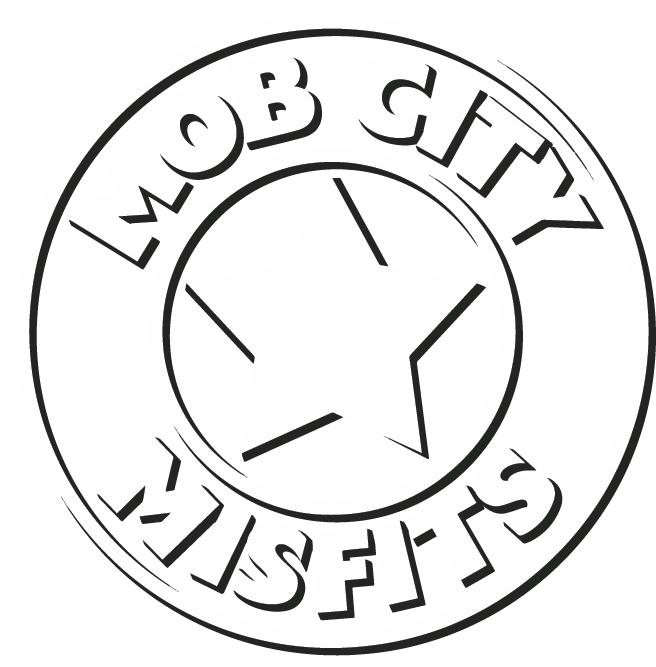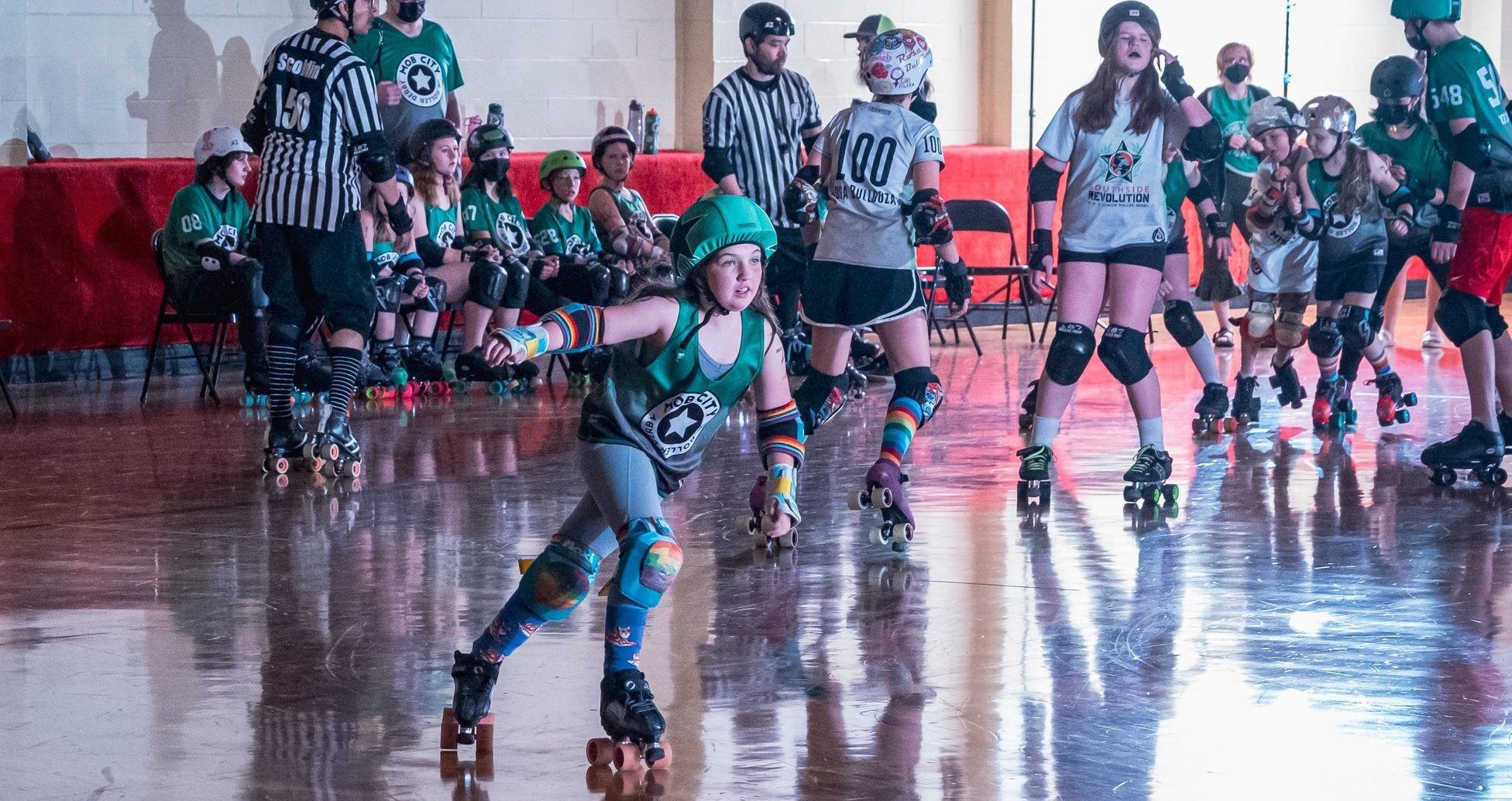________________________________________
If you want a quick introduction to the sport of roller derby, check out this video about the basics of flat track roller derby. Enjoy!
________________________________________
KEY TERMS
Jammer: |
Scores points for her team and wears a star on her helmet. |
Lead Jammer: |
The first jammer that legally makes it through the pack on the initial pass earns the ability to call off a jam. Lead jammer is signaled by the ref’s arm in the air. |
Blocker: |
Keeps the opposing team’s jammer from scoring points while clearing a path for her own team’s jammer to score. |
Pivot: |
A blocker who can switch positions with the jammer to score points. She wears a stripe on her helmet. |
Pack: |
The formation of blockers and pivots |
Jam: |
A two-minute countdown during which each of the 2 jammers’ attempt to score points. |
Period: |
A twenty or thirty minute session of unlimited jams |
OBJECTIVE
Today’s roller derby is essentially a race between jammers of opposing teams through a pack of blockers. There’s no finish line in this race however; jammers are attempting to score as many points in a set period of time as possible.
THE START
Each team sends out 5 skaters: one jammer, one pivot, and three blockers. Blockers (including pivots) make up the pack. When the whistle blows the jammer must navigate through or around the pack.
SCORING
Scoring commences on the jammer’s second pass through the pack. One point is scored for each member of the opposing team that the jammer legally passes (passing is determined by the skaters’ hips).
BLOCKING
Blockers try to stop the opposing jammer from passing them, while defending their own jammer, whom they can assist by pushing or pulling (whipping) in an attempt to advance them through the pack. To impede the progress of the opposing team’s jammer, players may block using body parts above the hips, excluding hands, forearms, elbows, and head. A jammer can be blocked by any member of the opposing team, including the other jammer.
PASSING THE STAR
Both jammers have the option of passing their positions to their respective team’s pivot by passing their helmet covers. The jammer then becomes the pivot and the pivot becomes the jammer for the remainder of the jam. If the original jammer was lead jammer, the position of lead jammer is not passed on.
It is illegal to:Block/push an opponent from behind Block with your feet or trip an opponent. GRAB, HOLD, or PULL an opposing player |
You may be wondering…
Why isn’t That Blocker BLOCKING?20 FOOT RULE —Skaters that are more than 20 feet from the front or rear of the pack cannot block or assist a jammer, and must yield to the jammer if they are in the way.
WHAT IS THE JAMMER WAITING FOR?If the jammer drops behind the blocker she passed out of bounds or illegally, she may re-pass the blocker in-bounds and get that point.
Take THAT!If a jammer laps the opposing team’s jammer, she scores an extra point. If she gets all 5 points (pivot, 3 blockers and opposing jammer) it’s a Grand Slam
WHY IS THAT SKATER IN THE PENALTY BOX?
Any penalty sends that player to the penalty box for one minute. During that time her team will skate without a skater in that position. Penalties may be assessed during or after the jam, and carry over from the first into the second half of the bout.
Why Penalties SUCK!
*The jammer earns a point each lap for every opposing skater passed including those in the penalty box. Points for penalized players are earned once the jammer has cleared the pack.
*If a jam ends before the penalty is over, it continues during the next jam.
Why call off a Jam?
Calling off the jam is a strategic move to prevent the other team from having the opportunity to score. For example, it can be helpful if the lead jammer’s team is at an unexpected disadvantage (due to good defense by the other team, or falling) or it can be used to solidify a lead when the jammer’s team is doing exceptionally well.
Still have questions? Attend a game to see us in action and ask a Skater!!
If you want to read more about the rules and regulations of Roller Derby – Check out the WFTDA Rule Set



